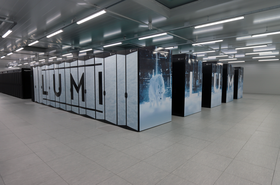Sandia National Labs has deployed the neuromorphic computing system SpiNNaker2 – Spiking Neural Network Architecture – to explore energy-efficient architectures for artificial intelligence and national security applications.
Developed by German neuromorphic supercomputing company SpiNNcloud Systems GmbH, SpiNNaker2 is based on a research project led by the creator of the original Arm architecture, Professor Steve Furber.
The project aimed to simulate parts of the human brain by connecting hundreds or thousands of Arm cores, with the deployment at Sandia National Labs reportedly simulating between 150 million and 180 million neurons, making it one of the five largest neuromorphic computing systems globally.
SpiNNaker2 uses a large number of low-power processors to simulate spiking neural networks and support AI workloads, with the system’s parallel architecture consisting of 48 SpiNNaker2 chips per server board, each containing 152 Arm-based cores and specialized accelerators.
The company says this “event-driven” computational approach allows the SpiNNaker2 to perform “complex simulations at a lower energy profile compared to traditional GPU-based systems,” offering 18x more energy efficiency than GPUs.
“Our vision is to pioneer the future of artificial intelligence through brain-inspired supercomputer technology for next-generation defense and beyond,” said Hector A. Gonzalez, co-founder and CEO of SpiNNcloud. “The SpiNNaker2’s efficiency gains make it particularly well-suited for the demanding computational needs of national security applications. We’re thrilled to partner with Sandia on this venture, and to see the system being brought to life first-hand.”
Craig M. Vineyard, PhD, research scientist at Sandia National Laboratories, added: “Although GPU-based systems can boost the efficiency of supercomputers by processing highly parallel and math-intensive workloads much faster than CPUs, brain-inspired systems, like the SpiNNaker2 system, offer an enticing alternative.”
According to SpiNNcloud’s website, its SpiNNext chip, which is 78x more energy-efficient than GPUs, will be “available soon.”
More in HPC & Quantum

Sponsored


Read the orginal article: https://www.datacenterdynamics.com/en/news/sandia-national-labs-deploys-spinnaker2-neuromorphic-computer/






